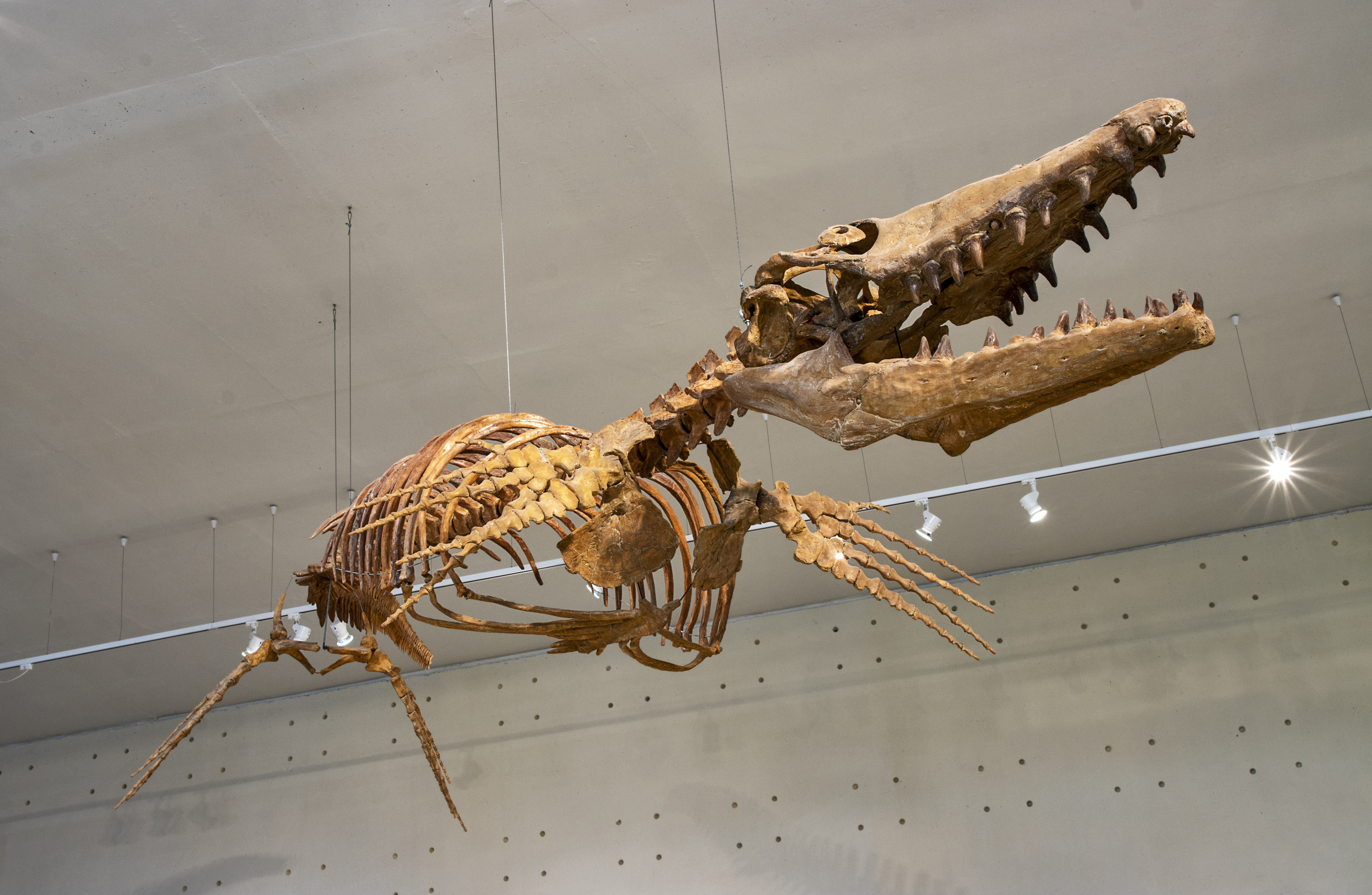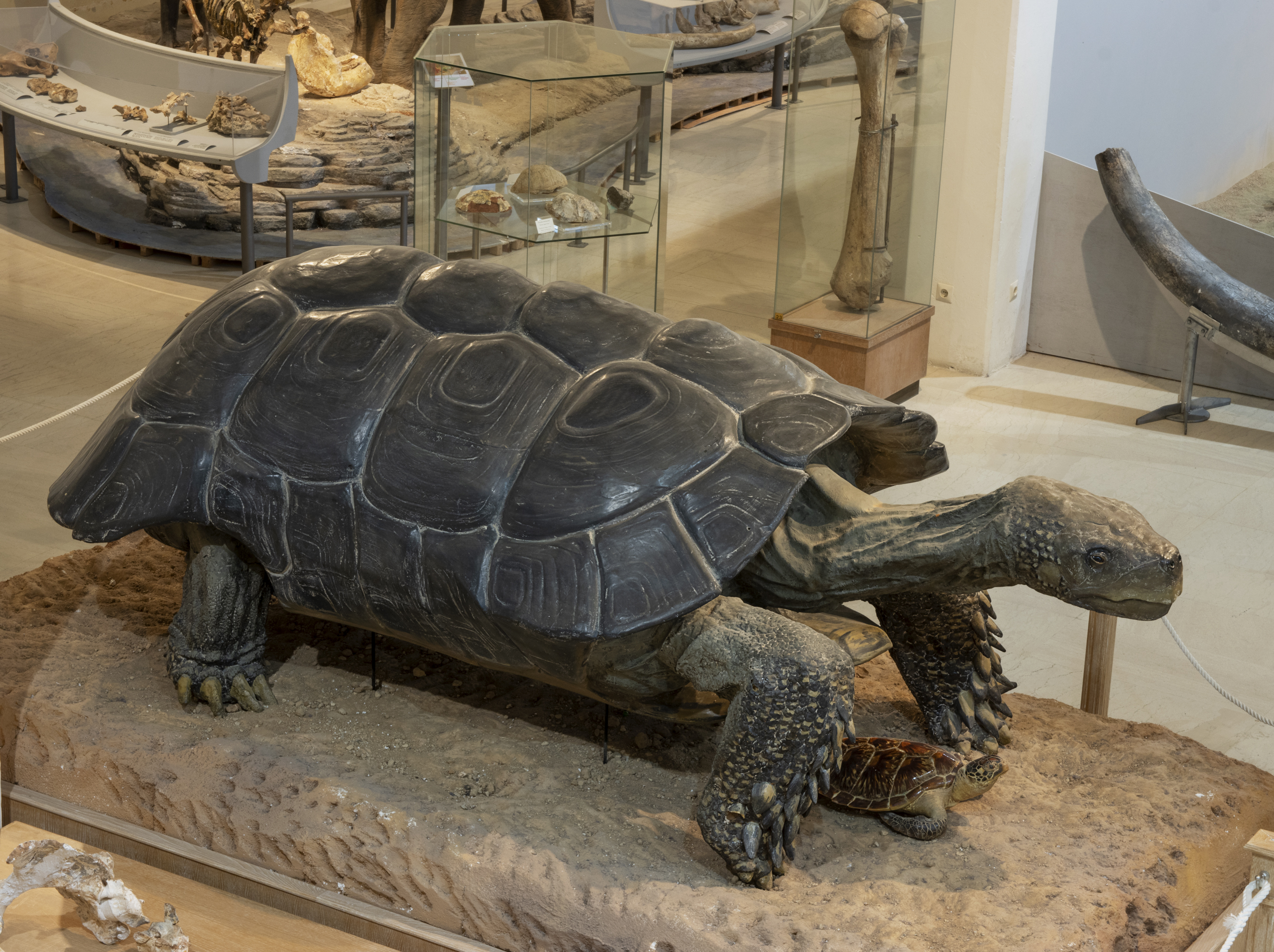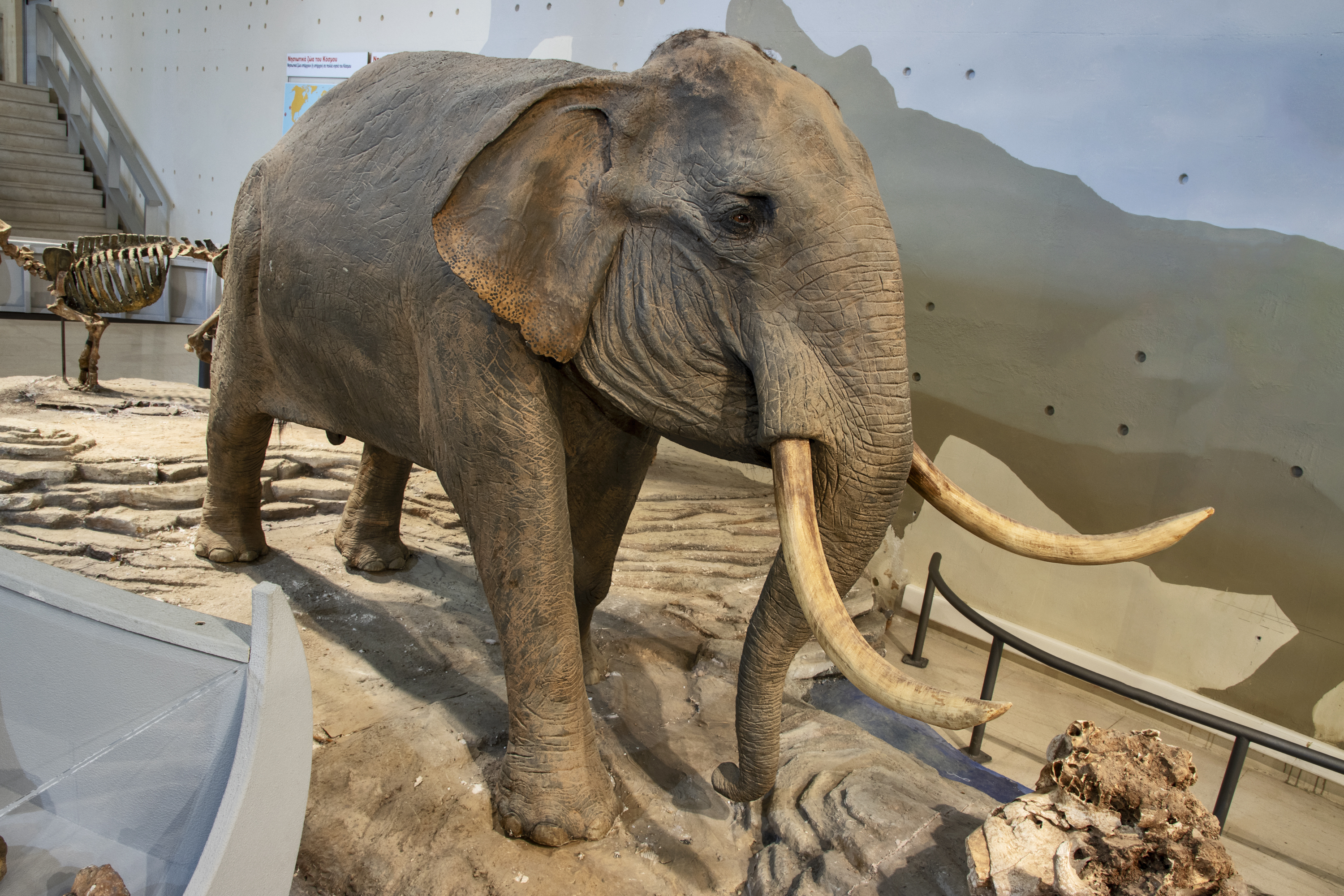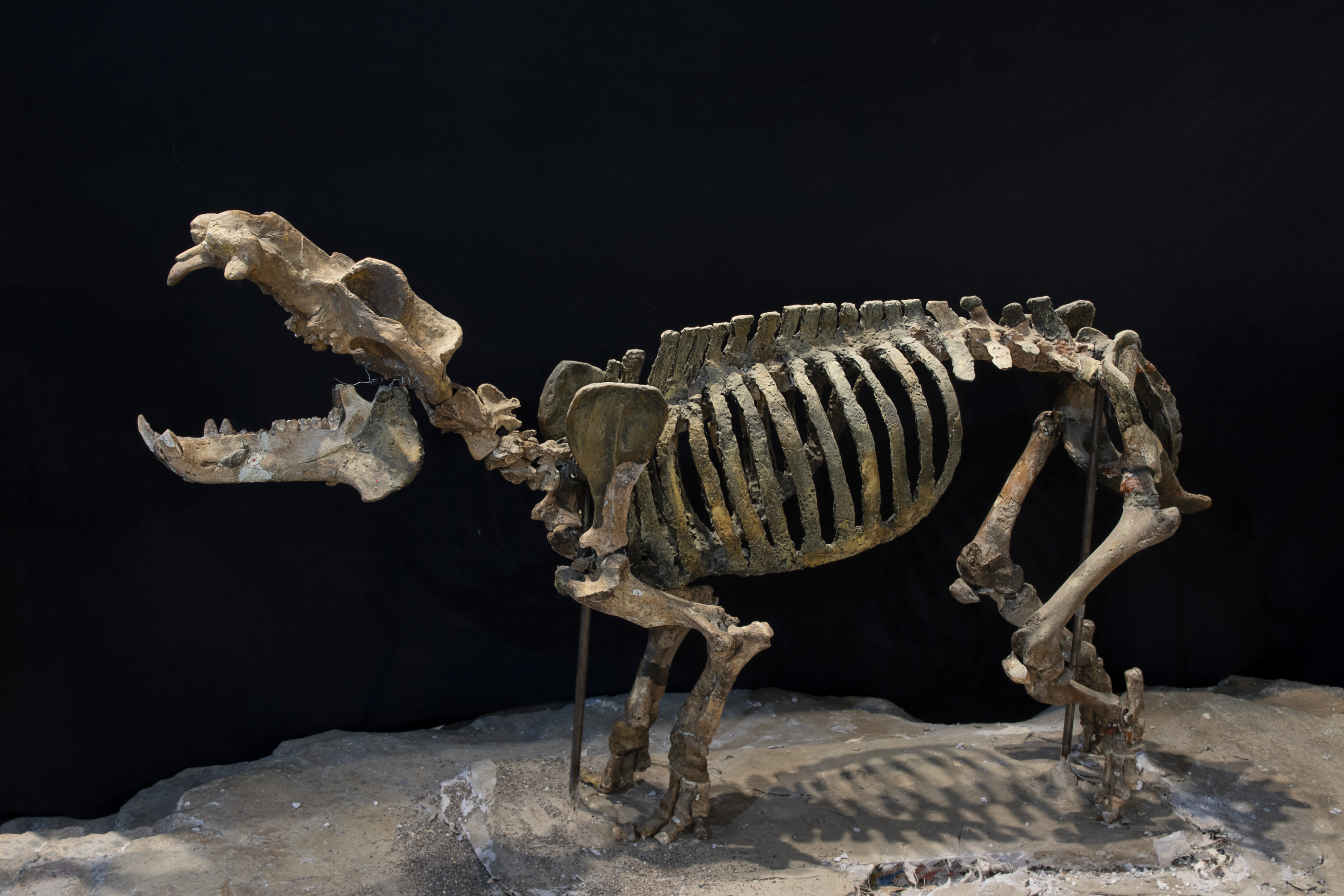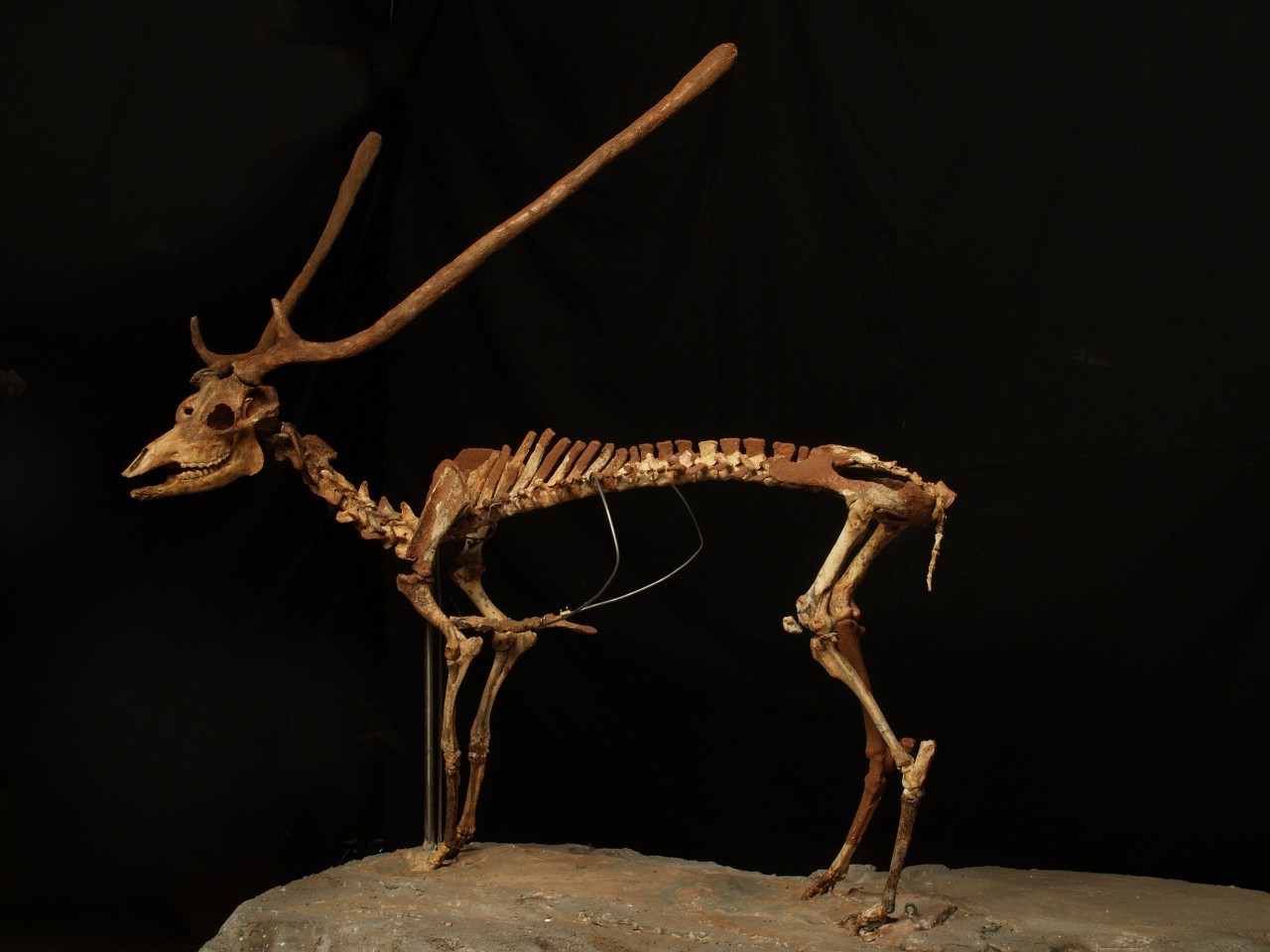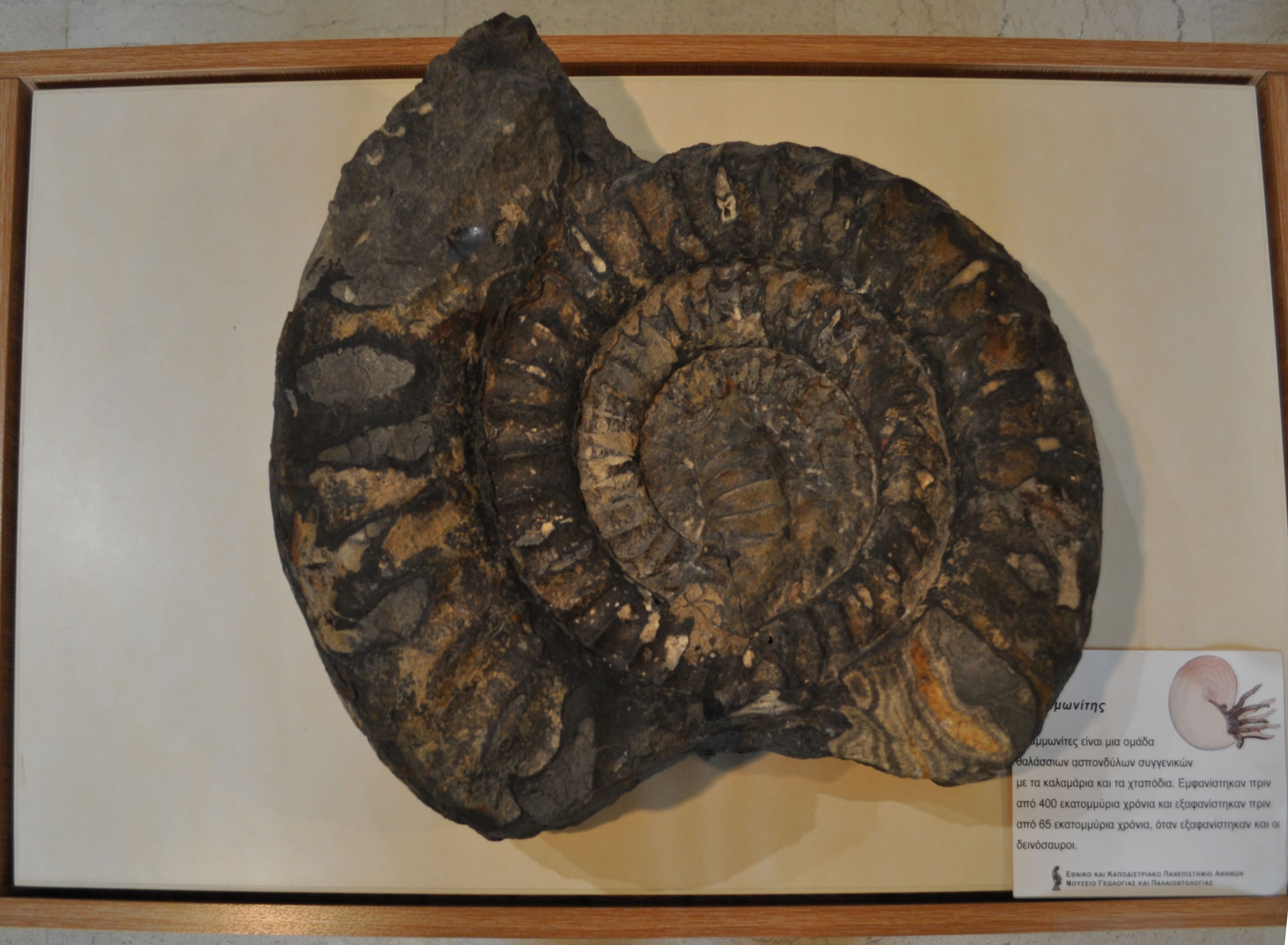Identity
The Paleontology and Geology Museum belongs to and is housed in the Department of Geology and Geoenvironment of the University of Athens. It maintains rich collections of vertebrate and invertebrate animals, plant fossils, and other paleontological findings and geological specimens from our country and abroad, which are being continuously enriched. It is open to schools and the public for guided tours daily. The main objective of the Museum is to produce paleontological research work by carrying out excavations throughout the country and through its scientific staff’s studies of the paleontological findings contained in its collections. In addition, it center of education and practical training for undergraduate and graduate students of geo- and bio-sciences. Finally, the Museum aims to disseminate knowledge and raise public awareness regarding the promotion and protection of the paleontological heritage of the country.
History
The accumulation of the first collections of animals, plants, fossils, rocks, and minerals began with the founding of the Physiographic Society in 1835, which became the heart of the Physiographic Museum. The Museum was incorporated into the University of Athens in 1858, while its collections were constantly enriched by donations, purchases, and material collected during research in Greece. In 1906 the University of Athens Paleontology and Geology Museum became autonomous, and it was housed on the ground floor of the building at the intersection of Akadimias and Sina in Athens. As of 1932, it operated under a law that allowed many research opportunities and ensured the protection of mammal fossils. In 1981, the Museum was moved to the Panepistimiopolis-Campus, in the School of Sciences building, where it is housed today. The Paleontology and Geology Museum collection includes fossils of animals and plants from throughout Greece, covering more than 300 million years of our country's geological history, and it is characterized by diversity, an excellent state of preservation, and the specimens' uniqueness. Furthermore, specimens from abroad, micropaleontological and stratigraphic collections and early 20th century depictions of paleoenvironments are also included. Its collections are supplemented with findings that come exclusively from the Department of Historical Geology and Paleontology of the University of Athens members' research programs, the paleontological excavations of faculty members, and, also, donations.
Types of audiences
The University of Athens Paleontology and Geology Museum is the oldest and richest in findings Greek center of paleontological research and carries out scientific research, rescue or strategic excavations throughout the country. Dozens of foreign researchers, graduate students, and Ph.D. candidates visit its collections every year. It is an educational and practical training venue for undergraduate and graduate students of the Department of Geology and Geoenvironment, the Biology Department, the students of the Department of Conservation of Antiquities and Works of Art of the Technological Educational Institute of Athens, and the graduate students of the Interdepartmental Graduate Program in Museology of the University of Athens. Faculty members have carried out various research programs in its laboratories, mainly concerning the Paleontology of Vertebrates or Invertebrates and Micropaleontology. Finally, the Museum is open to the public in order to disseminate knowledge and raise public awareness on issues related to the promotion and protection of our paleontological heritage. Perhaps the most critical step in that direction was taken in 1984, when after numerous appeals, by decision of the Central Archaeological Council, the site of the Pikermi excavations was declared an archaeological site of outstanding natural beauty.
Collections & Exhibitions
In the Museum's exhibition area, the visitor can admire some of the most important fossils found in Greece and fossils-milestones in the history of life evolution on earth, setting on a journey back in time guided by fossils. The world-famous Pikermi fauna occupies a central place in the Museum's hall with the hipparion horses, the machairodonts, the gazelles, the giraffes, the rhinos, and the hyenas that lived 7 million years ago in the Greek plains, as well as the famous fossilized mammals of the Karyes Isioma of Megalopolis that lived during the Pleistocene age. A natural reconstruction of a dwarf elephant from Tilos Elephas tiliensis, as well as a life-size reconstruction of a giant turtle from the upper Miocene, joined the Museum's exhibitions recently. Various holotypes have been included in the Museum's collections, such as the skull of Choerolophodon chioticus, a primitive Proboscid which lived on Chios 14 million years ago. The sea world is exhibited through fossilized mollusks, brachiopods, corals, sponges, echinates, arthropods, and fish, as well as a reconstruction of a Mosasaurus skeleton that lived 70 million years ago. The Museum's collection of marine fossils covers a wide range of the history of life on the planet, presenting characteristic specimens from the main geological periods of the Phanerozoic. The plant fossils included in the exhibits prove to bear irrefutable witnesses to the evolution of plants. Exhibited specimens include the Evros Oligocene, the Miocene of Kimi, Elassona, and Vegora, and the onset of modern Mediterranean flora in Santorini 60,000 years ago.
Events & Activities
The Museum welcomes school visits daily, organizes educational programs for students, and for the better understanding of the exhibits and the exhibition, the scientific staff guides the students. Recently, the Museum launched pilot remote tours in selected collections, through the digital platform Museotek. The platform is directed to educational institutions and the short-term goal of the Museum is the ability to conduct multiple guided tours daily.
Accessibility
The Museum is in the process of installing a ramp to enable access to the physically challenged people.
Terms of Operation
It is open five-days-a-week from 9.00 to 14.30
Director Efterpi Koskeridou, Professor, Department of Geology and Geoenvironment.
Decision of Establishment
Museum of Geology and Paleontology, Department of Geology & Geoenvironment, University of Athens, Government Gazette 6603, 27/12/2002/ issue 1, no. sheet 31



